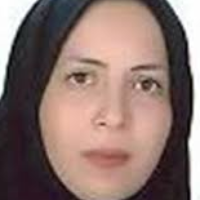A Comparative Analysis of the Effect of Visual and Textual Information on the Health Information Perception of High School Girl Students in Tehran
Information and information sources can be divided into three broad categories according to their nature or type: textual information (book, journal article, conference paper, dissertation, newspaper, etc.), visual information (infographic, photo, Cartoons, films, etc.) and audiovisual information. The purpose of this study is to determine the effect of reading textual information in comparison with visual information (infographics) on the health information perception of high school girl students in Tehran.
The current study was carried out by applying a semi-experimental method in which a pretest/posttest design was used on two groups. The research population included 30 high-school girl students of Boshra High School in Tehran. Two groups of 15 students were randomly selected and invited to participate in groups. In fact, 15 participants in one group read textual health information and 15 participants in another group read infographic health information. An acquaintance pre-test was performed on both groups and two post-tests of learning and retention were used to evaluate whether the participants learnt and retained textual and visual health information, which was presented to them during the period under study using a 27-item self-report questionnaire based on textual and visual information. Finally, the results of the two groups were analyzed by descriptive statistics and dependent and independent t-test.
The findings of the study showed that the mean scores of the two groups of participants were the same as in the pre-test, the difference between the observed mean scores for the pre-test scores was not statistically significant. Furthermore, the mean scores of the two groups of participants for both textual information and visual information (infographics) were equal in the post-test of learning, and the difference in mean scores for post-test scores was not statistically significant. This means that both textual information and visual information (infographics) have increased the participantschr('39') learning to the same degree and do not differ significantly in terms of learning. Additionally, the mean scores of both groups for textual information and visual information (infographics) in the post-test were also equal and the difference in observed mean for post-test scores was not statistically significant. The latter finding means that textual information and visual (infographic) information were remembered equally and were not significantly different.
The findings of the present study indicates that textual information and visual information (infographics) have increased the learning and retention of participants to the same extent and are not different in terms of learning and retention. It can also be concluded that despite the appearance of the formats and the media, the text still has an important place in the learning and retention of students.
-
Investigating the improvement of reading experience and phonetic transcriptions of non-Persian speakers: the case study of Saadi's poems
Maryam Emamverdi*, Fatemeh Fahimnia, *
Human Information Interaction, -
Reasons for Retraction of Iranian Articles: A Systematic Review
Amirhosein Rajabzadeh Assarha, *, Nader Naghshineh
Journal of Academic Librarianship and Information Research,



